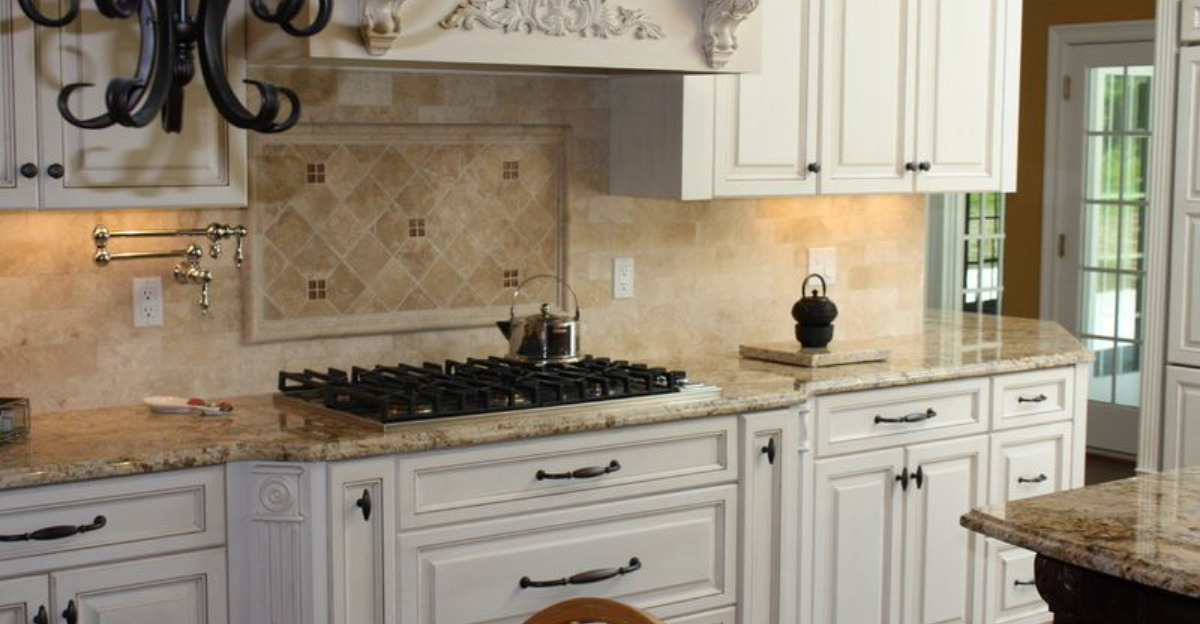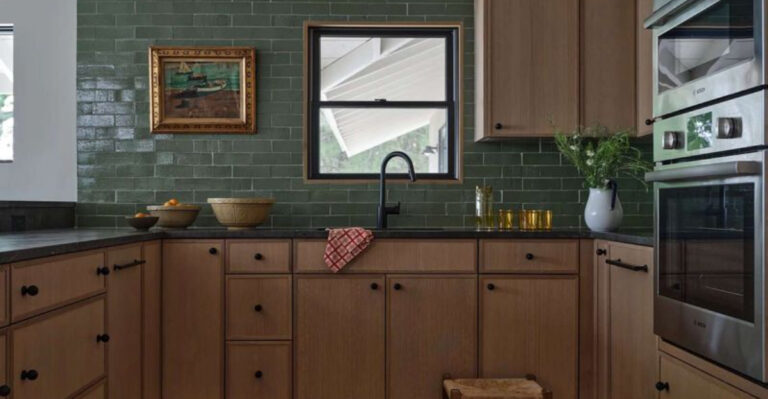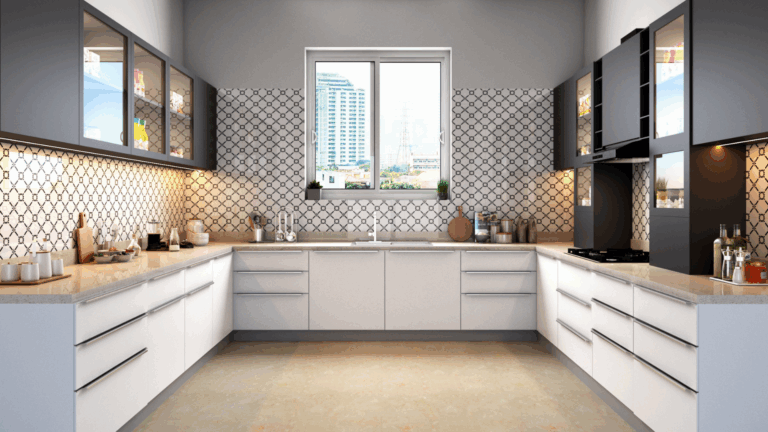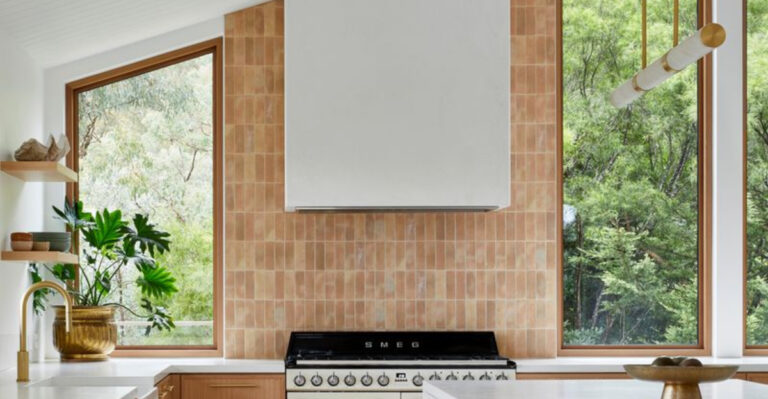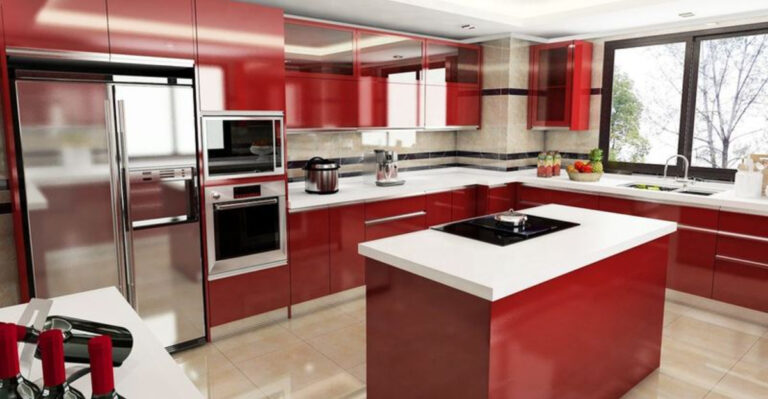15 Traditional Kitchens Experts Say Are Decreasing In Popularity (Plus 5 Even Worse Ones)
Kitchen design trends change faster than my morning coffee cools down, and trust me, that’s fast. What felt like the dream kitchen just five years ago can suddenly look tired and out of date.
I’ve noticed, along with designers and home experts, that homeowners’ tastes are shifting big time. Some classic styles that once dominated renovations are now losing their appeal quicker than I’d expected.
If you’re thinking about updating your kitchen or just curious what’s falling out of favor, I’m here to share what’s really happening in this ever-changing space we all spend so much time in.
1. Tuscan-Style Kitchens With Heavy Stone And Dark Wood
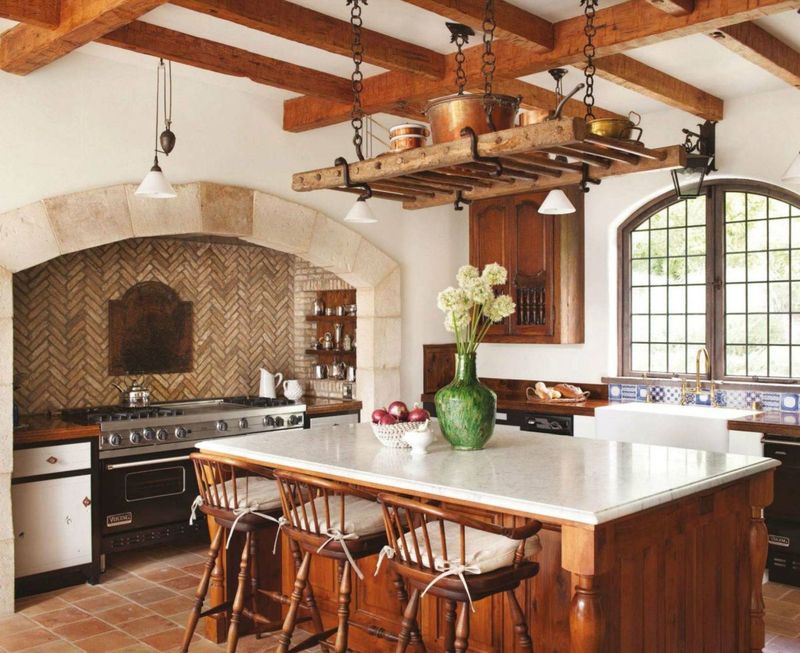
Remember when everyone wanted that rustic Italian villa look? Those days are fading fast. Heavy stone countertops paired with dark wood cabinets create spaces that feel more like medieval dungeons than modern cooking areas.
Homeowners are ditching this style because it makes kitchens feel cramped and gloomy. The maintenance required for natural stone surfaces also drives people away. Plus, finding matching replacement pieces becomes a nightmare when something breaks.
2. All-White Shaker Cabinets Everywhere

White kitchens dominated Pinterest boards for years, but the trend is losing steam. Every house seems to have identical white shaker cabinets that look like they came from the same factory.
Experts say this cookie-cutter approach lacks personality and warmth. Families with kids quickly discover that white shows every fingerprint, scratch, and stain.
The sterile hospital-like appearance makes cooking feel less inviting than it should be.
3. Granite Countertops In Busy Patterns
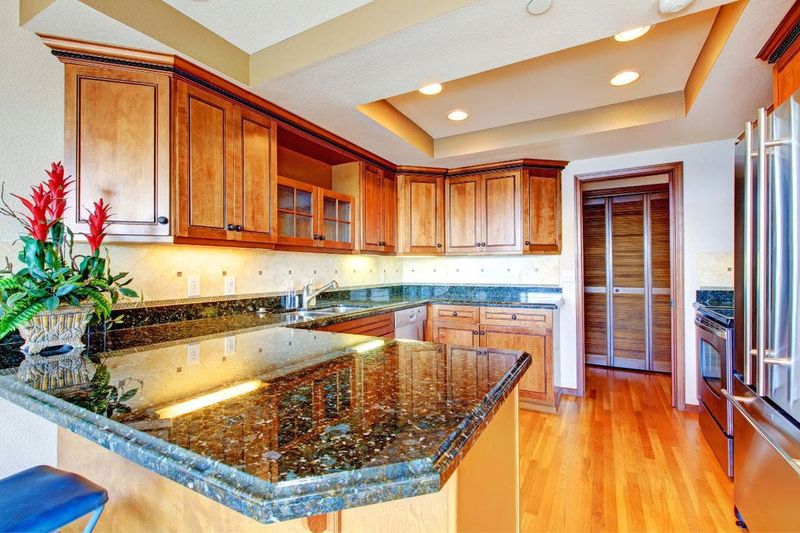
Granite with wild patterns and multiple colors once screamed luxury and sophistication. Now it just screams chaos and confusion in most kitchen spaces.
These busy surfaces compete with everything else in the room for attention. They make small kitchens feel even smaller and create visual noise that hurts your eyes.
Cleaning around all those veins and patterns becomes tedious, and the dated look makes entire kitchens feel stuck in the past.
4. Raised Panel Oak Cabinets
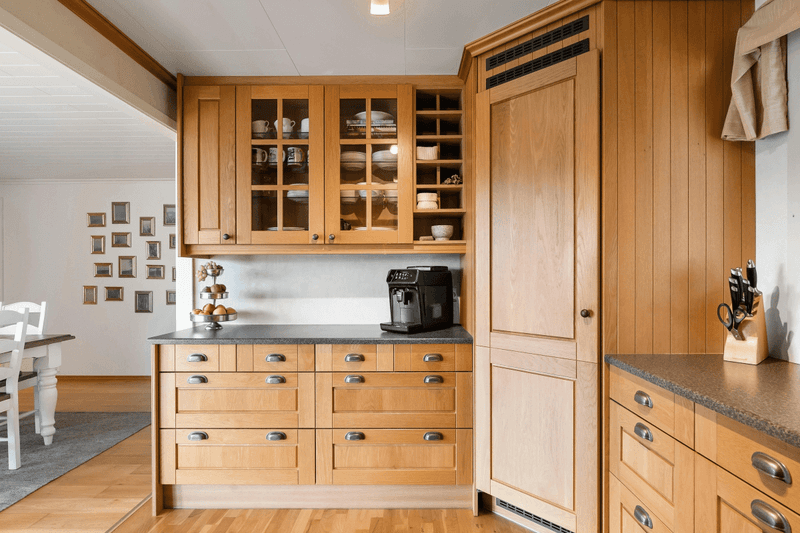
Oak cabinets with raised panels ruled the 1990s and early 2000s kitchen scene. Unfortunately, they never really left some homes, creating a time capsule effect that screams outdated.
The honey oak finish paired with brass hardware looks tired and worn out. These cabinets collect dust in all the grooves and crevices, making cleaning a chore. Modern homeowners prefer cleaner lines and more contemporary wood finishes that feel fresh and current.
5. Copper Farmhouse Sinks
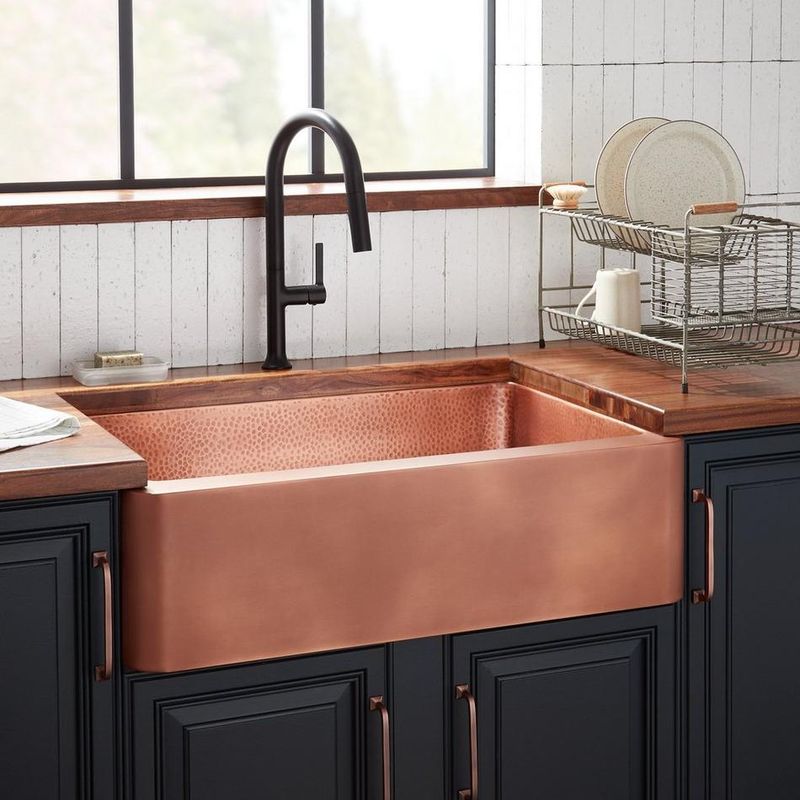
Copper farmhouse sinks had their moment in the spotlight, but that moment is quickly passing. The high maintenance requirements and constant polishing needs turn most homeowners away.
These sinks develop patina that some love and others hate, creating an unpredictable appearance. Water spots show up immediately, and the copper can react with certain foods and cleaning products.
Plus, the price tag makes most people question whether the hassle is worth the investment.
6. Travertine Tile Backsplashes
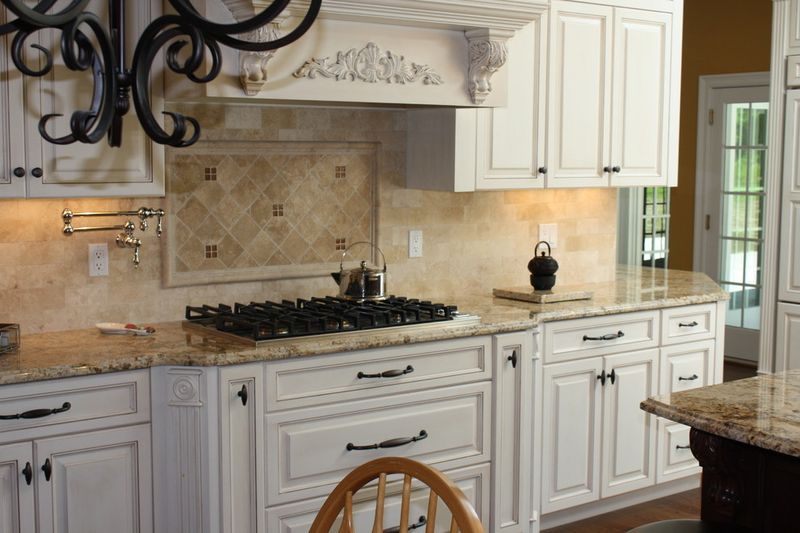
Travertine tiles brought natural stone beauty to kitchen backsplashes, but they also brought endless maintenance headaches. The porous surface absorbs grease, stains, and odors like a sponge.
Cleaning behind the stove becomes impossible when grease seeps into the stone permanently. The natural holes and pits in travertine collect food particles and bacteria.
Sealing requirements every few years add to the cost and hassle of maintaining these surfaces.
7. Wrought Iron Pot Racks Hanging From Ceilings

Hanging pot racks seemed like a great space-saving solution until people realized they create more problems than they solve. Dust settles on every surface, including the bottoms of pots and pans.
The wrought iron develops rust spots over time, especially in humid kitchens. Reaching overhead to grab heavy pots becomes dangerous and impractical for shorter family members.
The medieval castle look also clashes with modern appliances and contemporary design elements.
8. Checkerboard Floor Patterns

Black and white checkerboard floors once added classic charm to kitchens everywhere. Now they mostly add visual chaos and make spaces feel smaller than they actually are.
The busy pattern competes with cabinet doors, countertop patterns, and backsplash designs for attention. Dirt and crumbs hide easily in the dark squares, making floors look dirty even when they’re clean.
The retro diner look feels forced and dated in most modern home settings.
9. Decorative Tile Borders And Accents

Decorative tile borders with intricate patterns and multiple colors dominated kitchen backsplashes for years. These busy accents now look cluttered and overwhelming in most spaces.
The ornate designs compete with everything else in the kitchen for visual attention. Grout lines multiply exponentially, creating more surfaces to clean and maintain.
When trends change, replacing just the decorative elements becomes impossible, forcing complete backsplash renovations instead of simple updates.
10. Laminate Countertops That Mimic Stone

Fake stone laminate countertops fooled nobody and satisfied even fewer homeowners. The plastic appearance becomes obvious under kitchen lighting, especially around seams and edges.
Heat damage from hot pots creates permanent white marks that scream cheap materials. The printed patterns never quite match real stone, creating an uncanny valley effect that makes kitchens feel artificial.
Scratches and chips reveal the brown substrate underneath, making damage impossible to hide or repair properly.
11. Rooster And Chicken Themed Decorations
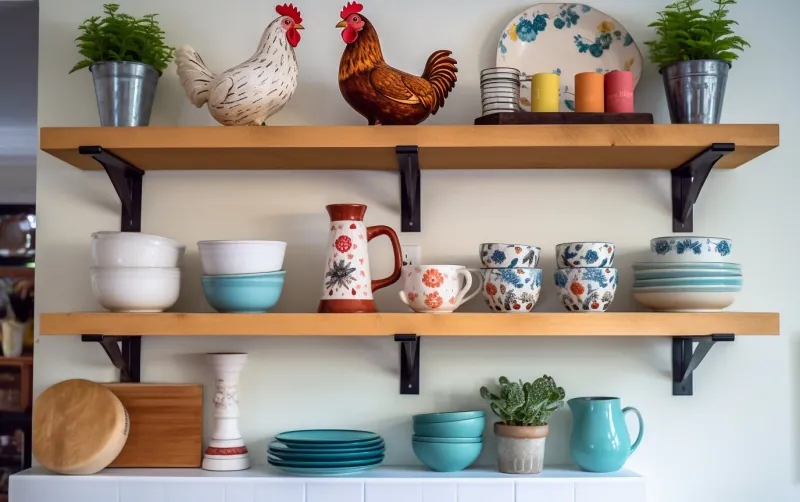
Rooster and chicken themes took over country kitchens everywhere, but the barnyard look is flying the coop. These decorations create visual clutter that makes kitchens feel busy and chaotic.
The cutesy farm animal motifs appeal to fewer homeowners as design tastes evolve toward cleaner aesthetics. Collecting dust on multiple surfaces, these decorations require constant cleaning and maintenance.
The theme also limits flexibility when updating other kitchen elements or changing seasonal decorations.
12. Fluorescent Lighting Under Cabinets
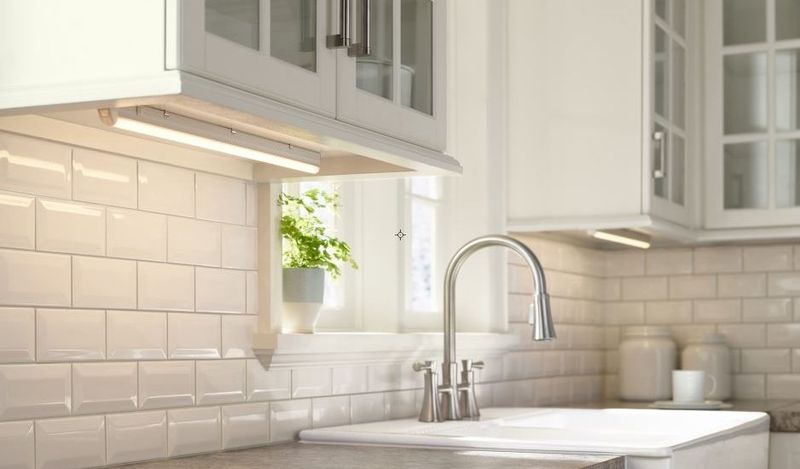
Fluorescent under-cabinet lighting created harsh shadows and unflattering color temperatures that made food look unappetizing. The buzzing sound and flickering bulbs drove homeowners crazy.
These fixtures cast strange shadows that make food preparation difficult and dangerous. The cool blue light makes warm kitchen spaces feel cold and unwelcoming.
Replacing burnt-out fluorescent tubes becomes expensive and inconvenient, especially when specific sizes are discontinued.
13. Vertical Blind Window Treatments

Vertical blinds in kitchens collect grease, food particles, and cooking odors like magnets. The plastic slats become discolored and brittle over time, breaking easily when adjusted.
Cleaning individual slats becomes a tedious chore that most homeowners avoid until the blinds look disgusting. The institutional office building appearance clashes with warm, welcoming kitchen atmospheres.
When one slat breaks, finding exact replacements becomes nearly impossible, forcing complete blind replacement.
14. Decorative Plates Displayed On Walls
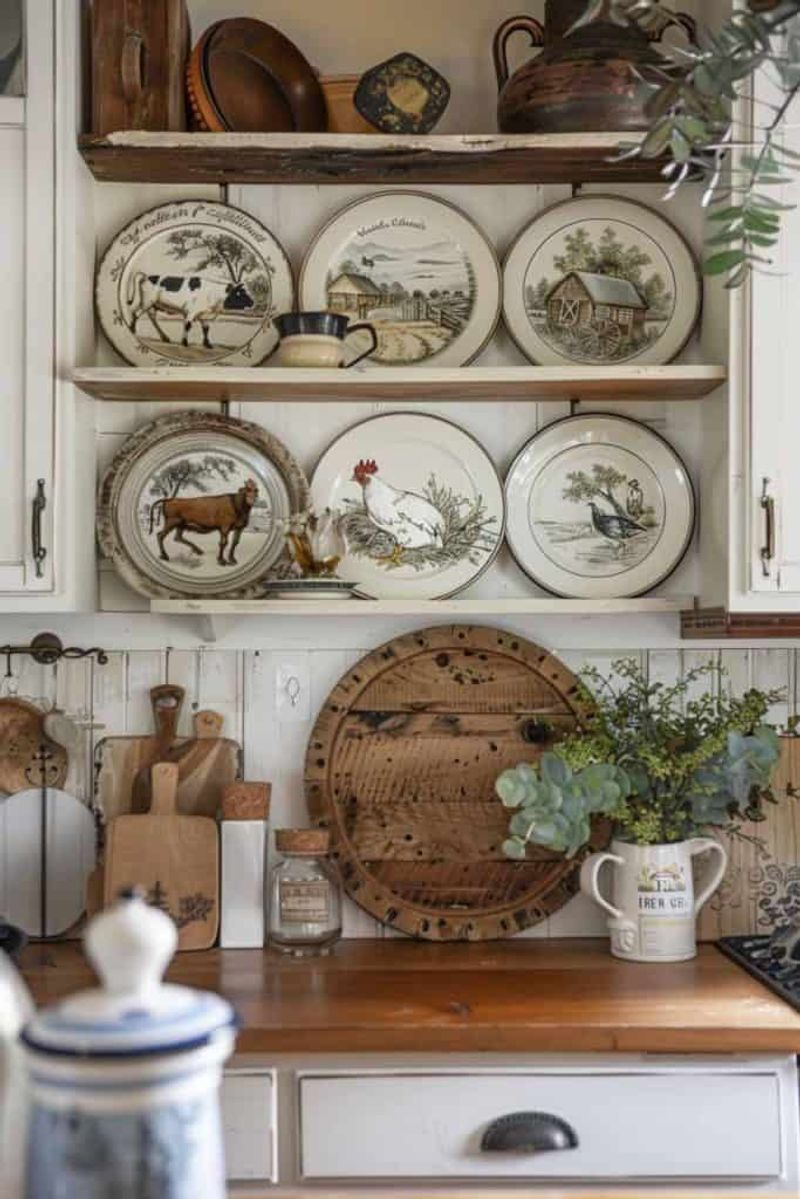
Wall-mounted decorative plates created instant kitchen personality, but they also created instant dust collection points. The mismatched patterns and sizes often look chaotic rather than charming.
Grease from cooking settles on every surface, making these decorations require frequent cleaning. The plates limit wall space for more functional storage or modern art pieces.
When decorating trends change, removing plate hangers leaves multiple holes that need patching and painting.
15. Valances Over Kitchen Windows
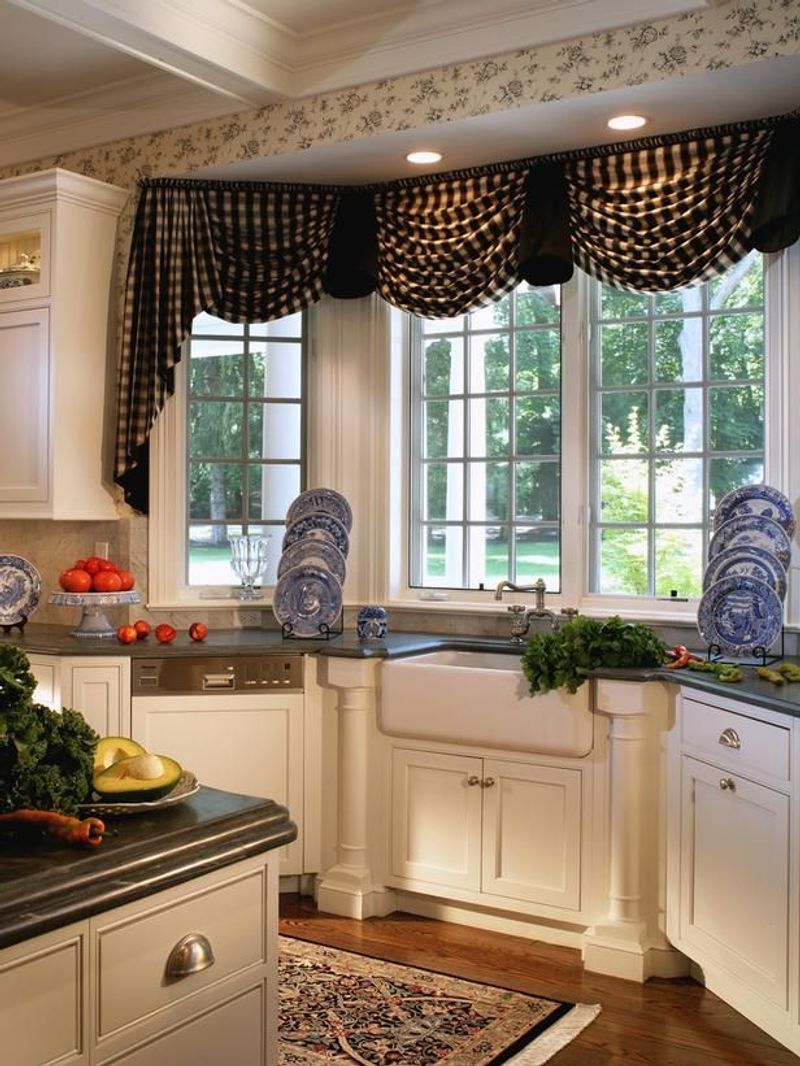
Fabric valances over kitchen windows absorbed cooking odors and grease, creating permanent stains and unpleasant smells. The ruffled and gathered styles look dated and fussy.
These window treatments block natural light and make windows appear smaller than they actually are. Washing fabric valances becomes a regular chore that most homeowners skip until they look obviously dirty.
The country cottage look clashes with modern appliances and contemporary kitchen designs.
16. Wallpaper Borders Around Room Perimeters
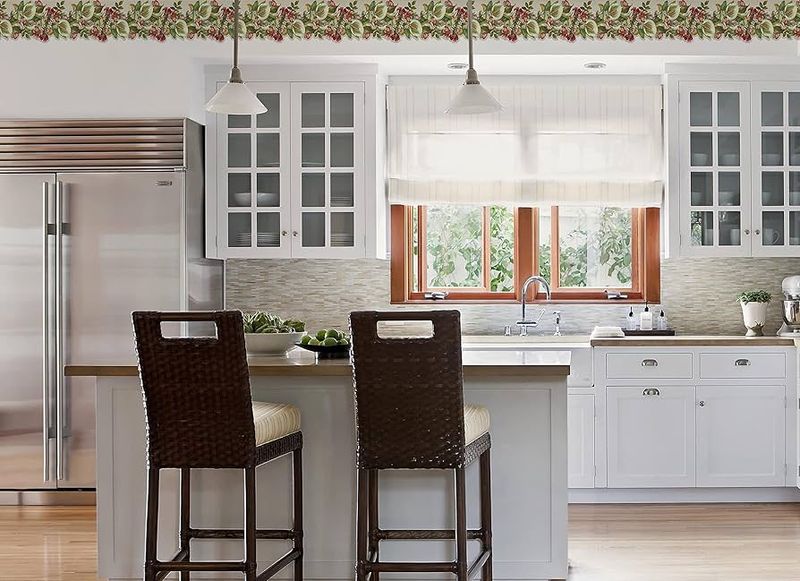
Wallpaper borders with fruit, flower, or country motifs dominated kitchen walls throughout the 1980s and 1990s. These decorative strips now look dated and childish in most spaces.
The patterns compete with cabinet hardware, tile designs, and other decorative elements for attention. Removing old wallpaper borders requires steaming, scraping, and multiple coats of primer before repainting.
The horizontal lines also make ceilings appear lower and rooms feel smaller than they actually are.
17. Stainless Steel Appliances With Fingerprint Magnets
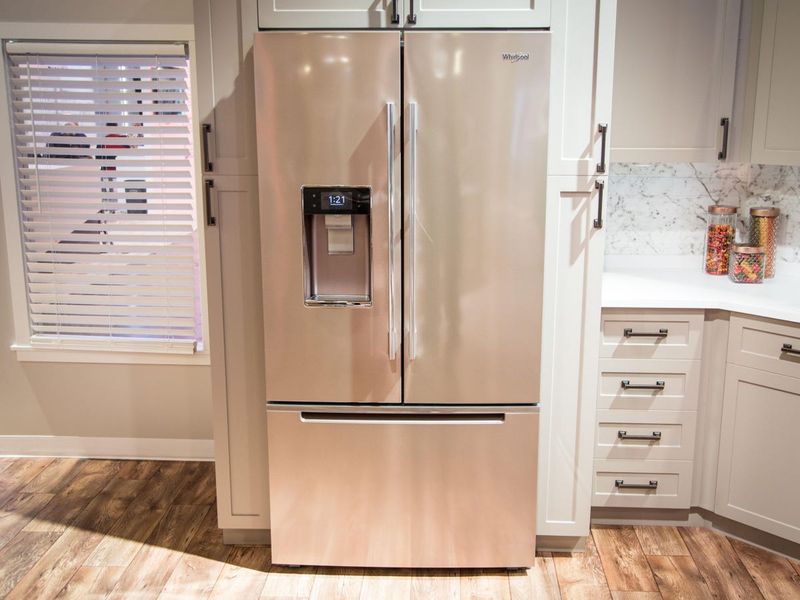
Stainless steel appliances promised a professional kitchen look but delivered endless fingerprint frustration instead. Every touch leaves visible marks that require constant cleaning and polishing.
The cold industrial appearance makes kitchens feel less welcoming and homey. Different stainless steel finishes from various manufacturers never quite match, creating a patchwork effect.
The surfaces also show water spots, food splatters, and scratches that make appliances look worn out quickly.
18. Ceramic Tile Countertops With Grout Lines
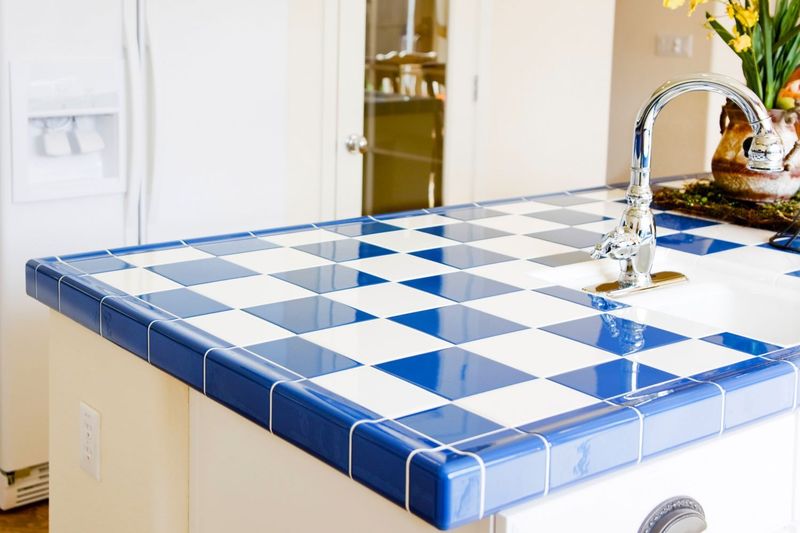
Ceramic tile countertops with grout lines created endless cleaning challenges and hygiene concerns. Food particles and liquids settled into grout lines, creating permanent stains and bacterial growth.
The uneven surface made rolling dough and food preparation difficult and frustrating. Cracked tiles became safety hazards with sharp edges that could cut fingers.
Replacing individual tiles rarely matched existing ones perfectly, creating a patchwork appearance that looked cheap and poorly maintained.
19. Open Shelving That Collects Dust And Grease
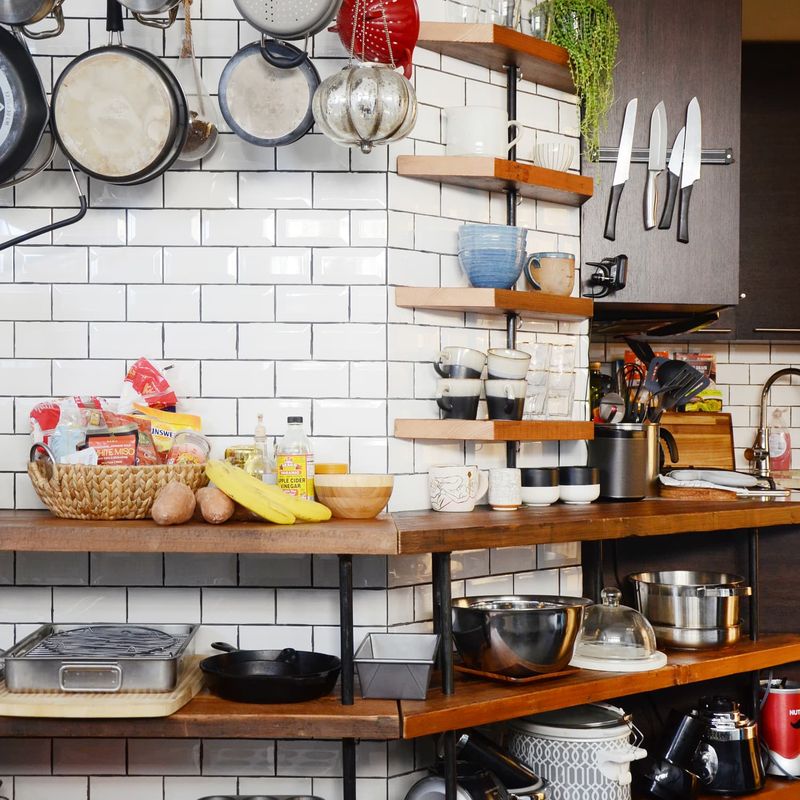
Open shelving promised easy access to dishes and decorative items but delivered constant cleaning headaches instead. Cooking grease settles on everything, making dishes dirty before they’re even used.
The exposed storage looks cluttered and chaotic unless perfectly organized at all times. Dust accumulates on every surface, requiring weekly cleaning to maintain an acceptable appearance.
The lack of doors also means everything needs to look perfect constantly, creating stress rather than convenience.
20. Pendant Lights That Hang Too Low Over Islands
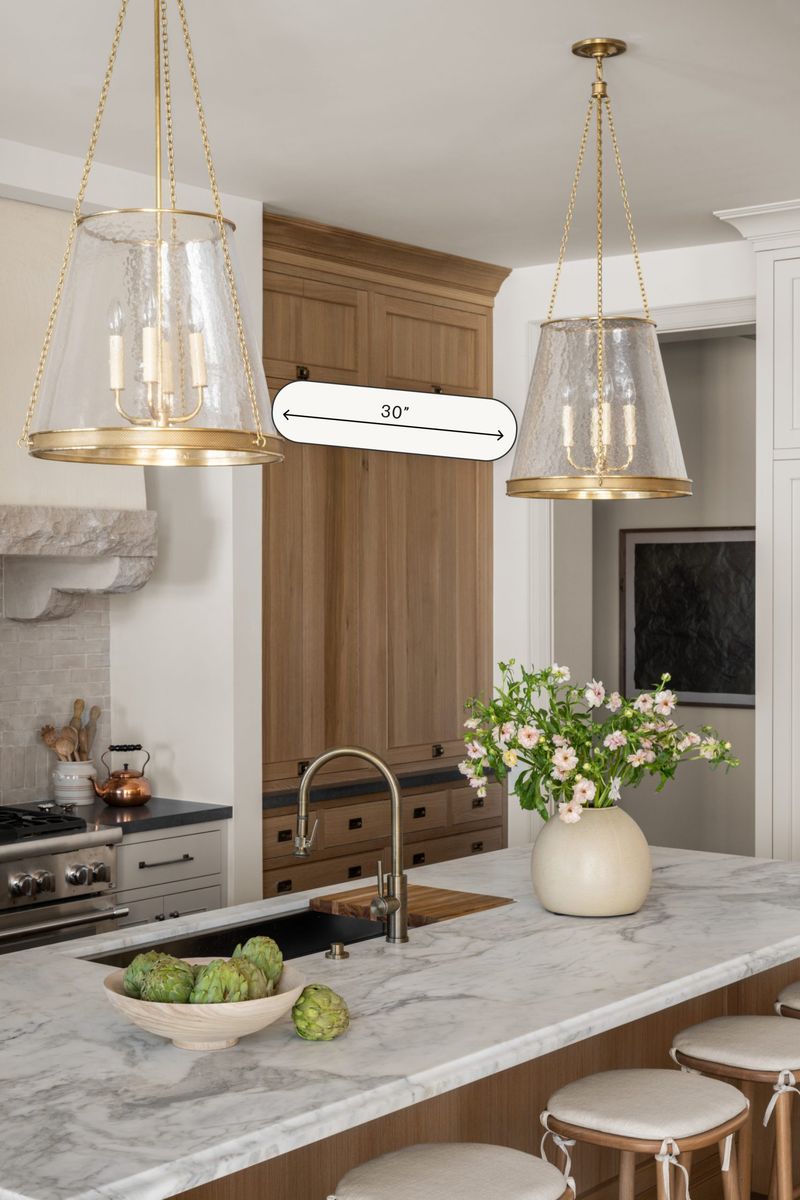
Pendant lights hanging too low over kitchen islands create dangerous head-bumping hazards for anyone walking around the space. The lights block sight lines and make islands feel cramped.
Tall family members constantly duck to avoid hitting their heads on poorly positioned fixtures. The lights also interfere with food preparation and serving, getting in the way of large platters and serving dishes.
Cleaning the fixtures becomes difficult when they hang at awkward heights.

